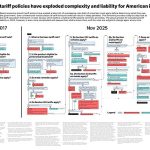
Norbert Michel
Last week, the Federal Reserve and the Government Accountability Office (GAO) both released reports on the large bank failures that occurred in March 2023. Both reports reveal serious shortcomings of the U.S. regulatory framework for banks.
The GAO report discusses the failures of both Silicon Valley Bank (SVB) and Signature Bank, institutions regulated at the federal level (primarily) by the Federal Reserve (Fed) and the Federal Deposit Insurance Corporation (FDIC), respectively. The Fed’s report deals exclusively with SVB and its parent holding company, Silicon Valley Bank Financial Group (SVBFG). Both reports make it clear that regulators were aware, for many years prior, of the problems that caused these banks to fail in 2023.
The very first page of the GAO report, for example, states that “In the 5 years prior to 2023, regulators identified concerns with Silicon Valley Bank and Signature Bank, but both banks were slow to mitigate the problems the regulators identified and regulators did not escalate supervisory actions in time to prevent the failures.” Regarding Signature, page 26 of the GAO report notes:
Although FDIC took some actions to escalate its supervisory actions in 2019 and 2020, its actions were inadequate given the bank’s longstanding liquidity and management deficiencies. Furthermore, FDIC lacked urgency despite Signature Bank’s repeated failures to remediate liquidity and management issues. [Emphasis added.]
The failure to act more forcefully with an individual bank that is a repeat offender is bad enough, but it’s even worse for the FDIC considering it too is a repeat offender when it comes to inaction. As page 27 of the GAO report explains, an earlier GAO report (from 2011) detailed shortcomings with the FDIC’s prompt corrective action framework, the regulatory regime Congress enacted in 1991 to “address deficiencies at depository institutions and minimize losses to the Deposit Insurance Fund.”
To be fair, in 2013, the FDIC did address some of the concerns raised in the 2011 GAO report. Still, as explained on page 17, a separate GAO report in 2015 demonstrates that this kind of slow‐to‐act pattern has been around for a while. Specifically, the 2015 report notes that “although regulators often identified risky practices early in previous banking crises, the regulatory process was not always effective or timely in correcting the underlying problems before the banks failed.”
To its credit, the Fed’s report acknowledges similar supervisory mistakes at the Fed – as well as SVB’s board and management’s mistakes – leading up to SVB’s failure.
As the report explains, the Fed supervised the parent holding company of SVB as a “regional banking organization” for more than twenty years, and there were several long‐standing problems, including those with SVBFG’s governance and controls, liquidity, and capital. Regarding the commercial bank itself, the report notes that “SVB’s foundational problems were widespread and well‐known, yet core issues were not resolved, and stronger oversight was not put in place.”
In case there’s any doubt, the second page of the executive summary states that “SVBFG was a highly vulnerable firm in ways that both SVBFG’s board of directors and senior management and Federal Reserve supervisors did not fully appreciate.” These statements are quite revealing.
At best, these statements are an acknowledgement that the U.S. bank regulatory framework provides a false sense of security, and even the people with the most knowledge in the financial industry cannot possibly guarantee that things won’t go wrong. At worst, they’re a major condemnation of the regulatory system, particularly the Basel regime and the so‐called enhanced supervision courtesy of the 2010 Dodd‐Frank Act.
The Dodd‐Frank regulations, of course, have been the source of a heated debate since SVB’s failure. That debate, as I wrote in March, hinges on whether Dodd‐Frank provided sufficient protections against bank failures like the demise of SVB, and whether the Economic Growth, Regulatory Relief, and Consumer Protection Act (the Economic Growth Act) rolled back those protections. While it’s true that SVBFG would have been subject to several different requirements had Congress not passed the Economic Growth Act, it is not at all clear that those requirements would have prevented SVB’s failure.
More importantly, absent the Dodd‐Frank Act, regulators had enormous discretion to impose restrictions and requirements on SVB itself – the bank, not the holding company – if they decided the bank was acting in an unsafe or unsound manner. The Fed could have escalated its enforcement actions in any number of ways to reduce the riskiness of SVB, but it failed to do so for many years.
The Fed was the regulator for SVB for more than twenty years, and the Trump appointed Vice Chair of Supervision, Randy Quarles, left the Fed in October 2021 after a four‐year term. If Quarles’ tenure at the Fed created such a seismic “shift in culture and expectations” at the Fed, then the Fed should provide hard evidence, not self‐serving hearsay.
Regardless, these issues are a distraction from the Fed’s supervisory failures and the failure of the regulatory framework itself. (The report claims that the “root cause” of the Fed’s delays around supervisory actions is “difficult to ascertain,” so maybe the Fed’s inspector general will be able to figure it out.) The Fed’s evaluation of the enhanced supervision regime, as created by Dodd‐Frank and amended by the Economic Growth Act, provides multiple examples of the broad problems with the U.S. regulatory framework.
For instance, U.S. banking laws are preoccupied with regulating the holding company that owns a bank rather than the bank itself. The rules and regulations are beyond complex, and multiple federal regulators – including those at the Board of Governors, the district Fed banks, and the FDIC – have enormous discretion to implement and enforce those regulations. The framework depends on arbitrary cutoffs and ill‐defined concepts. For all the complexity of the capital and liquidity rules, they still depend on subjective assessments and projections.
This last problem is clearly demonstrated in the report’s discussion of SVB and the liquidity coverage ratio (LCR). It is true, for instance, that SVB would have been subject to a higher LCR requirement, with more frequent reporting, had Congress not passed the Economic Growth Act. It is difficult to argue, however, that this change would have saved SVB.
For starters, the Fed’s own estimates (Table 13, page 88) suggest that SVB would have been incredibly close to the higher metric at the beginning of 2022. Other estimates suggest that SVB would have met the LCR requirements by the end of 2022 as well, but the discrepancy only further demonstrates the problem. Once major component of the LCR is the expected net cash flow, and there is no dispute that SVB failed when it experienced unprecedented outflows.
The other major component of the LCR is known as high quality liquid assets (HQLAs), and the idea is that the bank has to have enough HQLA to cover its expected cash outflows. Several items qualify as HQLAs, with some being deemed higher quality than others. The highest quality (Level 1) includes Treasury securities, the second highest quality (Level 2A) includes securities issued by government‐sponsored enterprises, such as Fannie Mae and Freddie Mac, and the lowest quality (Level 2B) includes high grade corporate bonds.
Setting aside the question of how accurately anyone could estimate the bank’s cash flows, SVB could have met a higher LCR by shifting out of Fannie/Freddie securities and into Treasuries. However, SVB ran into trouble because it had to sell securities at a loss after interest rates rose, so having long‐term Treasuries really wouldn’t have mattered. One could argue regulators would have forced the bank to operate differently, but we already know, for a fact, that regulators were slow to act on any of the concerns they flagged at SVB. Given how unusual SVB’s business model was relative to other banks and how fast it was growing, it’s even more difficult to make that case.
There is no doubt the United States could use a major overhaul of its banking laws and regulations, but it doesn’t need more complexity or even more regulation. The overhaul should be based on exactly what Michael Barr, the Fed’s current vice chair for supervision, has called for on multiple occasions: humility. In other words, the system should be retooled based on the fact that nobody is particularly good at assessing and identifying new and emerging risks. The current system provides a false sense of security, and it’s long past the time to move in a different direction.





